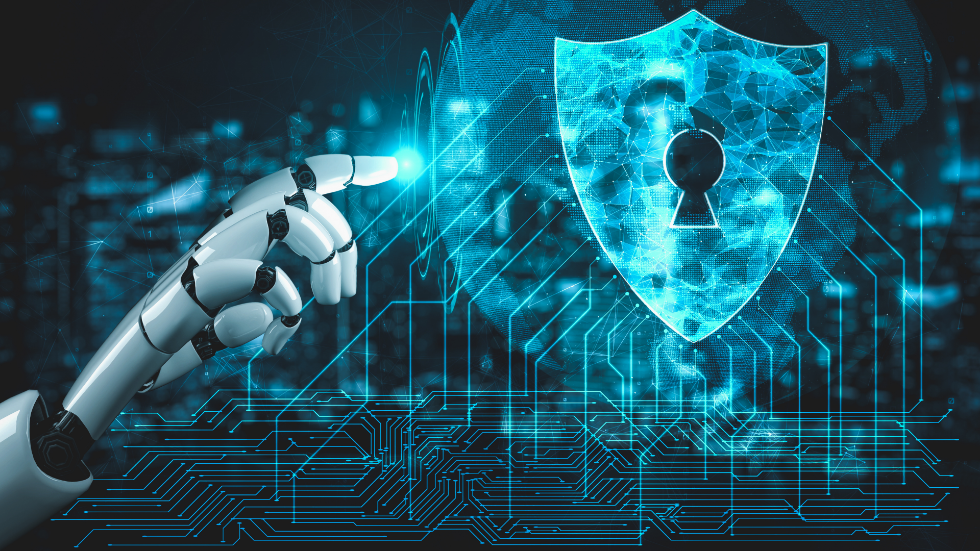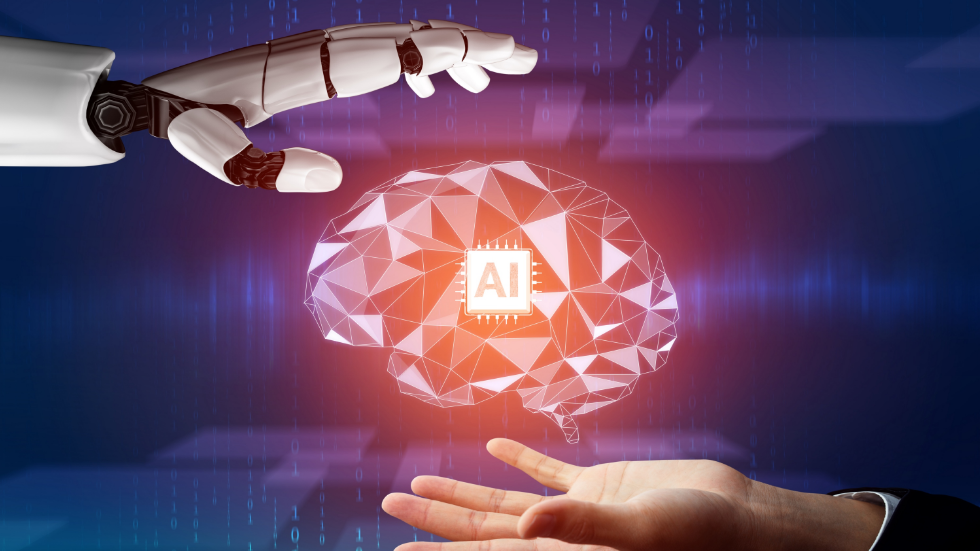Cybersecurity is no longer a choice; it’s a necessity in our digital age. As we embrace technology in every aspect of our lives, the threats to our digital existence continue to evolve. Standing at the forefront of this digital battle is artificial intelligence (AI). This blog will delve into the opportunities and challenges presented by AI in the realm of cybersecurity.
The Role of AI in Cybersecurity
Opportunity 1: Enhanced Threat Detection
Traditional cybersecurity approaches lean heavily on predefined rules and patterns to identify threats. However, cybercriminals operate outside these predefined boundaries, perpetually inventing novel attack methodologies that evade detection. This is where AI emerges as a true champion. It boasts the capability to process colossal volumes of data, unveil obscure patterns and anomalies that tend to elude human analysts and adapt in real time to emerging threats.
Consider this for a more tangible understanding: AI-powered systems can detect abnormal user behavior indicating a potential breach, such as unauthorized access or irregular data transfer patterns. The ability to spot such deviations quickly and accurately makes AI a formidable ally in the realm of cybersecurity.
Opportunity 2: Predictive Analysis
AI’s sphere of influence extends beyond just defense and encompasses prediction. By meticulously scrutinizing historical data and identifying trends, AI has the power to forecast potential cyber threats. This proactive approach empowers organizations to bolster their defenses proactively before an attack unfurls its destructive potential.
For instance, AI algorithms can analyze network traffic data to predict the possibility of Distributed Denial of Service (DDoS) attacks, thus enabling preemptive countermeasures. Such predictive analysis significantly reduces the element of surprise that cybercriminals rely on.
Opportunity 3: Automated Response
Should a threat materialize, AI stands ready to respond with the swiftness of a digital superhero. Automated responses, like isolating compromised systems or blocking malicious network traffic, can be executed without human intervention. This not only reduces response time but also ensures a consistent approach to addressing threats, mitigating the potential for human error.
Imagine a scenario where AI detects suspicious activity and promptly disconnects the affected device from the network, thereby preventing further compromise. This level of automated response can be a game-changer in situations where swift action is paramount to forestall data breaches or system damage.
The Challenges of AI in Cybersecurity

Challenge 1: Adversarial Attacks
For all its capabilities, AI is not impervious; it possesses its own Achilles’ heel – adversarial attacks. Adversarial attacks involve manipulating AI algorithms by feeding them misleading or specially crafted data. These attacks can lead AI systems to categorize malicious activities as benign, essentially turning our digital protector against us.
Countering these deceptive tactics necessitates ceaseless vigilance and the regular updating of AI models to detect and mitigate adversarial attacks as they evolve. It’s an ongoing chess match between the forces of good and evil, with each move countered and adjusted in real-time.
Challenge 2: Data Privacy Concerns
AI’s efficacy hinges heavily on access to vast datasets, some of which may contain sensitive or personal information. Mishandling or misuse of this data poses significant privacy concerns.
Robust data privacy measures are essential to address this challenge. These measures include encryption to protect data both in transit and at rest, strict access controls to limit who can access sensitive information, and data anonymization to de-identify data used in AI training processes. Moreover, organizations must adhere meticulously to relevant data protection regulations such as the General Data Protection Regulation (GDPR) to safeguard user data.
Challenge 3: AI Bias
AI algorithms inherit biases present in their training data. In cybersecurity, this could lead to discrimination or oversight of particular threats, essentially perpetuating the very inequities that cybersecurity seeks to eliminate.
To rectify this challenge, meticulous curation of training data is crucial. This involves selecting diverse datasets that accurately represent the various demographics and scenarios AI will encounter. Furthermore, ongoing monitoring and bias mitigation strategies are essential to ensure that AI-driven cybersecurity systems remain fair and unbiased in their operations.
The Future of AI in Cybersecurity

Trend 1: Autonomous Cybersecurity Systems
The future promises fully autonomous cybersecurity systems capable of detecting, responding to, and mitigating threats without human intervention. These systems will leverage AI and machine learning to make real-time decisions, thus eliminating the latency introduced by human involvement.
Picture a scenario where a network is under attack, and the autonomous cybersecurity system detects the threat, analyzes it, and takes appropriate action – all within milliseconds. This level of autonomy offers a robust defense against rapidly evolving cyber threats.
Trend 2: AI-Powered Threat Intelligence
AI will play a central role in threat intelligence, processing vast amounts of data to identify emerging threats and vulnerabilities. This will allow organizations to stay ahead of cybercriminals by proactively strengthening their defenses.
Imagine an AI system that can sift through vast troves of information from various sources – network traffic data, social media feeds, and threat reports – to identify potential threats in real-time. Such a system can provide invaluable insights into the evolving threat landscape, enabling organizations to prepare and respond effectively.
Trend 3: Quantum Computing vs. AI
Quantum computing looms on the horizon as a potential threat to current encryption standards. However, AI could also play a pivotal role in developing new encryption methods that are resistant to quantum attacks.
Quantum-resistant encryption is a critical field of research, and AI can aid in designing and testing encryption algorithms that can withstand the computational power of quantum computers. As quantum computing matures, AI will be instrumental in safeguarding sensitive data in the digital realm.
Trend 4: Cybersecurity Workforce Augmentation
AI will not replace human cybersecurity experts but will augment their capabilities. AI-driven tools will assist analysts in sifting through vast volumes of data, enabling them to focus on more strategic tasks and decision-making.
Consider a scenario where an organization’s cybersecurity team is inundated with alerts from various security tools. AI-driven systems can analyze these alerts, prioritize them based on severity, and provide actionable insights to human analysts. This collaboration between humans and AI streamlines the response to cyber threats.
Trend 5: Ethical Hacking and AI
Ethical hackers, often referred to as “white hat” hackers, will increasingly use AI tools to identify vulnerabilities in systems before malicious actors can exploit them. This proactive approach to cybersecurity leads to more robust security postures for organizations.
Think of ethical hackers employing AI-driven vulnerability scanners that automatically identify potential weaknesses in software or network configurations. This enables organizations to patch vulnerabilities before cybercriminals can exploit them, enhancing overall cybersecurity.
The Ethical Implications

Ethical Consideration 1: Accountability
Determining responsibility when AI systems make autonomous decisions in response to cyber threats is a complex challenge. Legal and ethical frameworks for accountability are crucial. Organizations must establish clear lines of responsibility for the actions taken by AI systems, including incident response decisions. This can involve defining the roles and responsibilities of human operators who oversee AI-driven cybersecurity systems.
Ethical Consideration 2: Privacy
AI’s use in cybersecurity, especially predictive analysis, raises privacy concerns. Data handling must align with established privacy regulations and respect individual rights. Organizations should be transparent about the data they collect and how it is used and provide mechanisms for individuals to control their data.
Moreover, AI systems used in cybersecurity should incorporate privacy-enhancing technologies such as differential privacy to protect individual data while still enabling effective threat detection.
Ethical Consideration 3: Bias and Fairness
AI bias is a pervasive concern, especially when it comes to decision-making in cybersecurity. Ensuring fairness and transparency in AI-driven cybersecurity tools is essential. This involves regular audits of AI systems for bias and implementing measures to mitigate bias where it is detected.
Furthermore, organizations should adopt diverse and inclusive training data to ensure that AI systems do not unfairly target or neglect specific threats based on demographic or other factors. Rigorous testing and validation of AI-driven cybersecurity systems can help uncover and rectify bias issues.
Conclusion
Artificial intelligence is indisputably transforming the landscape of cybersecurity, offering enhanced threat detection, predictive analysis, and automated responses. Yet, it also poses challenges, including adversarial attacks, data privacy concerns, and bias. To harness AI’s full potential in cybersecurity, organizations must invest in robust AI systems, prioritize data privacy and fairness, and remain vigilant in addressing its challenges.
As AI continues to evolve, so too will cyber threats, making the ongoing development and adaptation of AI-driven cybersecurity measures imperative to protect digital assets and data. Ethics must guide this journey, ensuring that the benefits of AI are leveraged responsibly and ethically to create a safer digital world for all. In this rapidly evolving digital landscape, the alliance between AI and cybersecurity is poised to be our most potent defense against the ever-evolving arsenal of cyber threats.
